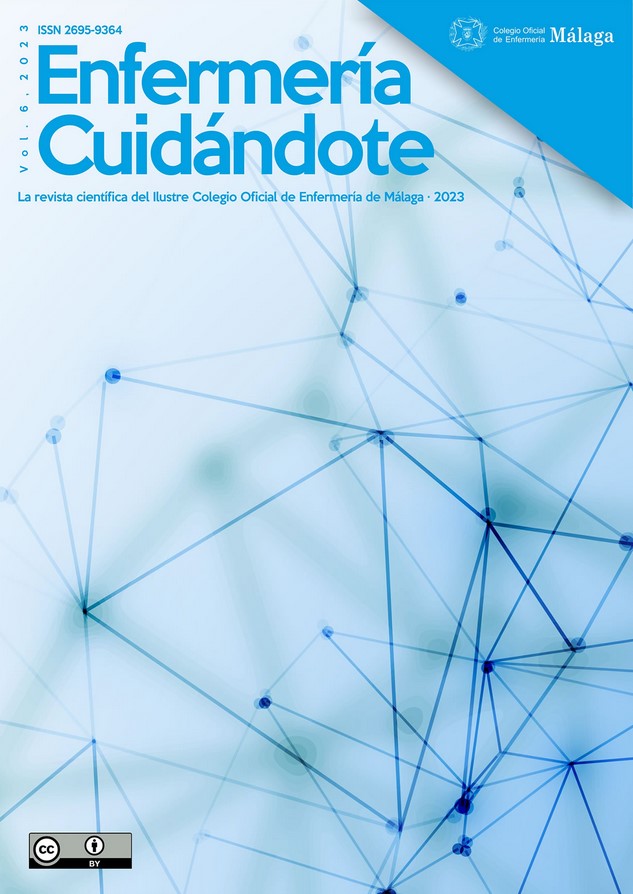Obstetric simulation as a tool in the training of Family and Community Nursing residents
DOI:
https://doi.org/10.51326/ec.6.7514577Keywords:
Formative Feedback, High Fidelity Simulation Training, Nursing, Nursing Simulation Training, ParturitionAbstract
Introduction: The unplanned and out of hospital labor (birthing) is an obstetric emergency that causes a stressful situation and that can entail significant risks to the health of the mother and the newborn.
Scientific evidence shows us that the effectiveness on the learning and the acquisition of skills are better performed when high-fidelity simulators are integrated into the training of future professionals. This activity requires knowledge and training from the instructors themselves who carry it out, and therefore represents a challenge for instructors in the training of this specialized nursing: the acquisition of a type of family and community nursing for emergency births outside the hospital.
The main aim: to incorporate in the teachings of family and community nurses a specific learning process with a high-tech simulator for the care of unplanned family out-of-hospital births.
Methodology: A simulation activity was performed in five scenarios outside of hospital with ten resident students in their second year using an obstetric simulator Victoria S2200. Two professionals undergoing training were involved in the scenarios during which the check list created for the activity is completed. An evaluation activity of the debriefing is performed in health (EDSS).
Results and Discussion: 100% of the participants were satisfied with the activity. The performing instructor’s evaluation gives us feedback for the improvement of other future learning activities. As numerous studies show, the acquisition of the procedure via a simulator allows to the novel professional a high range of achievement and an improvement of competences.
Downloads
References
Jauvadin F, Hamel V, Legrand A, Goddet S, Templer F, Potiron C et al. Unplanned out of Hospital Birth and risk factors of adverse perinatal outcomes findings from a prospective cohorte. Scand J Trauma Resusc Emerg Med. 2019;27. https://doi.org/10.1186/s13049-019-0600-z
Vázquez-Lara JM, Gómez-Salgado J, Fernández Carrasco FJ, Brieba-del Río P, Vázquez-Lara MD et al. Asistencia al parto inminente extrahospitalario. Actuaciones durante este proceso y cuidados a la madre y al recién nacido. Rev Esp Salud Pública. 2018;92:e201809063. Disponible en: https://www.scielosp.org/article/resp/2018.v92/e201809063/# [Consultado 07/02/2023]
INE. Partos. Año 2015. Madrid: Instituto Nacional de Estadística. Disponible en: https://www.ine.es/jaxi/Tabla.htm?path=/t20/e301/parto/a2015/l0/&file=10003.px&L=0 [Consultado 07/02/2023]
Kumar A, Nestel D, East C, Hay M, Lichtwark I, Maclellan G et al. Embedding assesment in a simulation skills training program for medical and midwifery students: A pre and post-intervention evaluation. Aust N Z J Obtet Gynaecol. 2018;58:40-6. https://doi.org/10.1111/ajo.12659
Satín AJ. Simulation in obstetrics. Obstet Gynecol. 2018;132(1):199-209. https://doi.org/10.1097/aog.0000000000002682
Bligard KH, Lidsey KL, Young OM. Simulation training for operative vaginal delivery among obstetrics and gynecology residents: a systematic review. Obstet Gynecol. 2019;134(Suppl.1):16S-21S. https://doi.org/10.1097/AOG.0000000000003431
Holmström, SH, Downes K, Mayer JC, Learman LA. Simulation training in an obstetric clerkship. A randomized controlled trial. Obstet Gynecol. 2011;118(3): 649-54. https://doi.org/10.1097/AOG.0b013e31822ad988
Dow A. Clinical simulation: a new approach to midwifery education. Br J Midwifery. 2008;16(2): 94-8. https://doi.org/10.12968/bjom.2008.16.2.28340
Cant RP, Cooper SJ. Simulation learning in nurse education: systematic review. J Adv Nurs. 2010;66(1):3-15. https://doi.org/10.1111/j.1365-2648.2009.05240.x
Evaluación del debriefing para la simulación en salud (EDSS). Manual del evaluador. Santander: Hospital Universitario Marqués de Valdecilla; 2016. Disponible en: https://harvardmedsim.org/wp-content/uploads/2017/06/Manual-de-trabajo-EDSS-completo-2016-agosto.pdf [Consultado 20-12-2022]
Victoria S2200. Simulador de partos materno y neonatal. Disponible en: https://www.hospital-hispania.com/opencms/export/sites/default/.content/documentos/catalogos/formacion/6_S2200-Victoria.pdf [Consultado 20-12-2022]
Orden SAS/1729/2010, de 17 de junio, por la que se aprueba y publica el programa formativo de la especialidad de Enfermería Familiar y Comunitaria. Boletín Oficial del Estado, nº 157 (29-06-2010). Disponible en: https://www.boe.es/buscar/doc.php?id=BOE-A-2010-10364 [02-12-2022]
Torres Díaz A, Mora Morillo JM, Pérez Caballero A. Programa de formación con simulador para residentes de enfermería obstétrico-ginecológica (matrona). Matronas Hoy. 2022;10(2):25-34. Disponible en: https://www.enfermeria21.com/revistas/matronas/articulo/241/programa-de-formacion-con-simulador-para-residentes-de-enfermeria-obstetrico-ginecologica-matrona/ [Consultado 30-11-2022]
Chitongo S, Suthers F. Use of technology in simulation training in midwifery. Br J Midwifery. 2019;27(2):85-9. https://doi.org/10.12968/bjom.2019.27.2.85
Alinier G. Skills Benefit of advanced simulation training. J Paramed Pract. 2009; 1(9):369-75. https://doi.org/10.12968/jpar.2009.1.9.42995
Fanning R, Gaba D. The role of debriefing in simulation-based learning. Simul Healthc. 2007;2(2): 115-25. https://doi.org/10.1097/sih.0b013e3180315539
Sears K, Goldworthy S, Goodman WM. The relationship between simulation in nursing education and medical safety. J Nurs Educ. 2010;49(1):52-5. https://doi.org/10.3928/01484834-20090918-12
Deering S, Rowland J. Obstetric emergency simulation. Semin Perinatol. 2013;37(3):179-88. https://doi.org/10.1053/j.semperi.2013.02.010




















